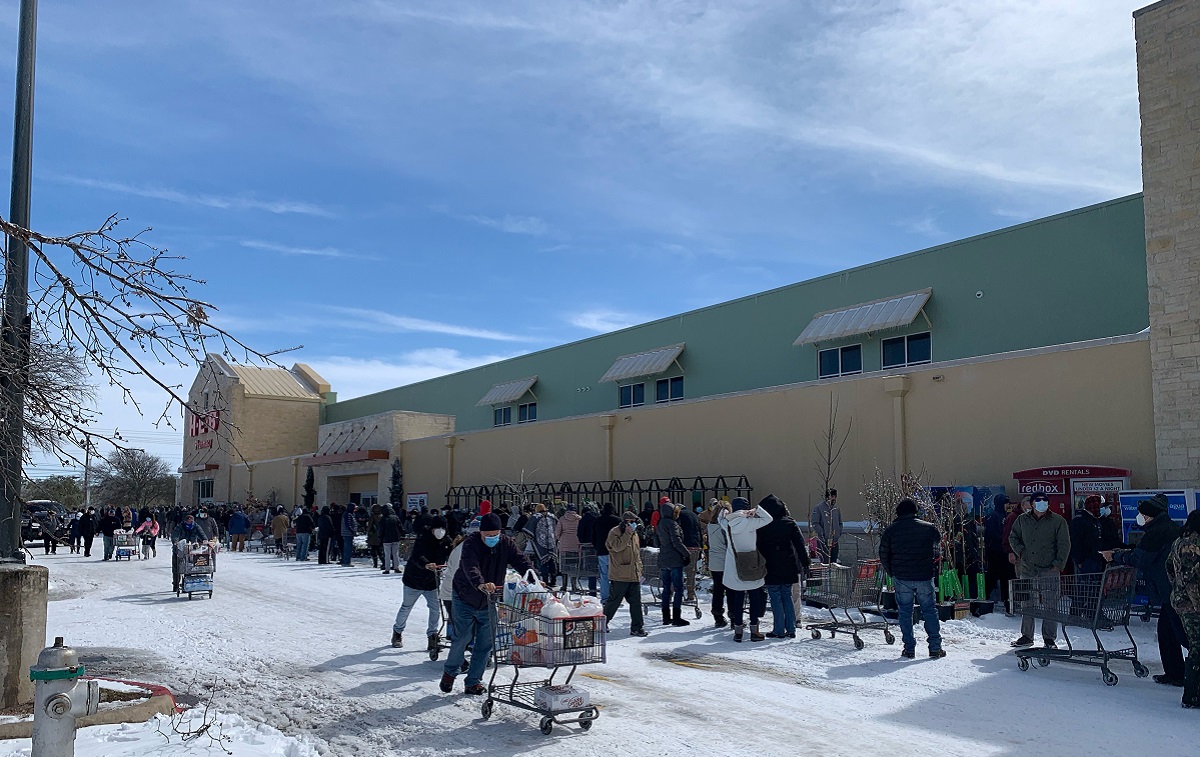In February, a blast of bitter cold knocked out power across the country, hitting Texas especially hard. It left millions without heat in the coldest temperatures seen in those regions in decades. Grocery store shelves were bare, and water treatment plants went offline. In Texas alone, more than 30 people froze to death, suffered carbon monoxide poisoning after running cars or gas appliances to stay warm, or died on account of other impacts of the storm. I’ve been horrified by the first-person accounts from Sierra Club staff and volunteers and other members of our extended community.
This unprecedented deep freeze in a state known for its long stretches of hundred-degree days is yet another example of the extreme weather climate change fuels. The record temperature plunge collided with an electric grid that wasn’t built to withstand climate change. And it unfolded against a backdrop of deepening economic and racial inequality that made the cold and power outages much more harmful to low-income communities and communities of color.
Now that the lights are back on, and Texas is slowly recovering from the storm, we must ask ourselves how we can prevent a disaster like this from happening again. As awful as these blackouts were, they offer an opportunity to rethink our energy system for a climate-changed world. It’s clear that we need a more resilient, sustainable, and just way to power our economy—one where people’s needs come before the profits of utilities and fossil fuel executives.
Texas’s energy system is largely reliant on fossil fuels, and it’s set up to maximize industry profits, no matter the consequences to our climate or public health. Digging, refining, and burning fossil fuels all contribute to the climate crisis that left millions of Texans freezing and without power last week. Those same processes pollute Texas communities, especially the low-income communities of color the fossil fuel industry treats as “sacrifice zones,” causing elevated rates of asthma, cancer, and other diseases. And when disaster struck, fossil fuels were responsible for the lion’s share of electricity outages.
This failure should serve as a wake-up call. We need a rapid transition away from fossil fuels, and toward 100 percent clean, renewable energy that won’t pollute our air, water, or communities, or cause even more extreme weather like what we saw last week. Despite what politicians supported by the fossil fuel industry would have you think, renewable resources operated as expected during the cold snap. They could have been made even more reliable if Texas leaders had prepared for the extreme temperatures they were warned to expect after cold spells in 2011 and 2014 knocked power offline. When wind turbines are weatherized, they’re able to keep turning through brutal winters in places like Michigan.
Texas leaders failed to invest in making the grid resilient to the extreme weather that climate change is bringing. They put financial considerations above the safety of those they purport to serve. The blackouts show the necessity of investing in our energy grids, so they are capable of withstanding the extreme storms, floods, and freezes that are becoming the norm as our climate changes. We need more distributed, renewable energy options—think rooftop solar—that reduce communities’ dependence on big generating stations and their long, unreliable supply chains. And we should offer everyone the financial support they need to protect their homes from extreme weather and to install energy-efficiency measures that will reduce electricity use in times of high demand.
Unfortunately, Texas isn’t the first state to experience climate-induced blackouts. And we are at risk of seeing the story repeat itself across the country, especially as the West approaches wildfire season again. Our electric grids were built for a world with a stable climate, which no longer exists. In the aftermath of this storm, Texas has an opportunity to rebuild its energy system so it uses clean energy to run reliably even in extreme weather. It can choose to put its peoples’ safety before the profits of the fossil fuel industry. These investments might seem expensive. But as the February blackouts showed, it’s nothing compared to the cost of failing to mitigate or prepare for the climate crisis.
